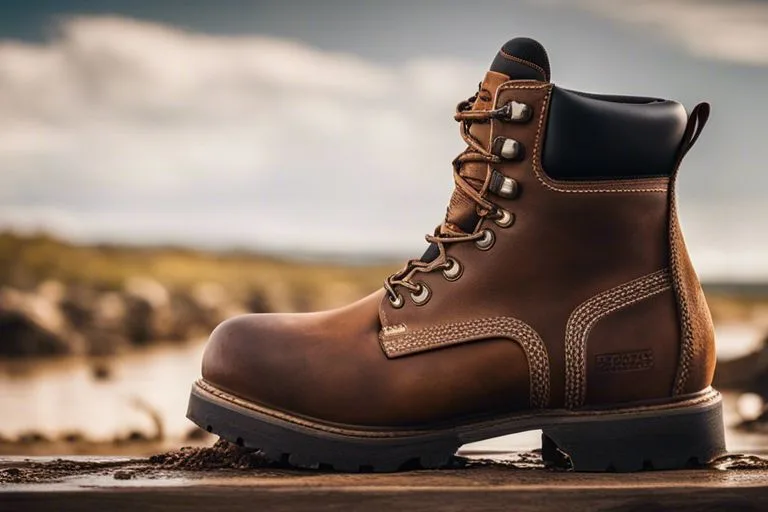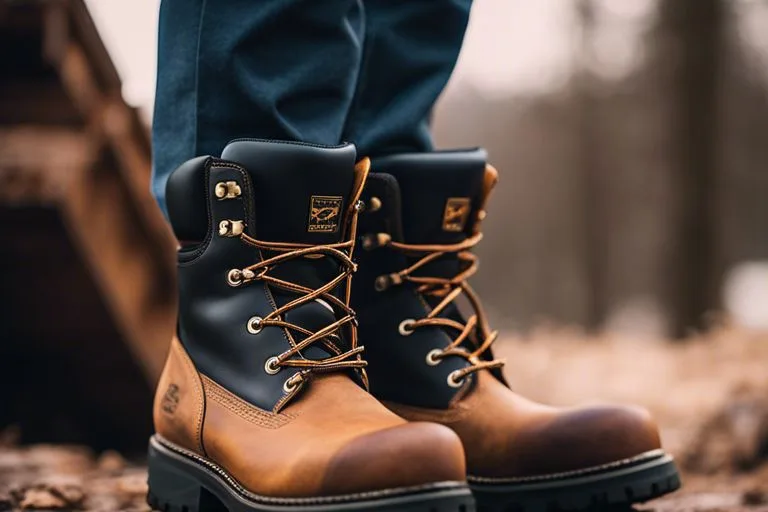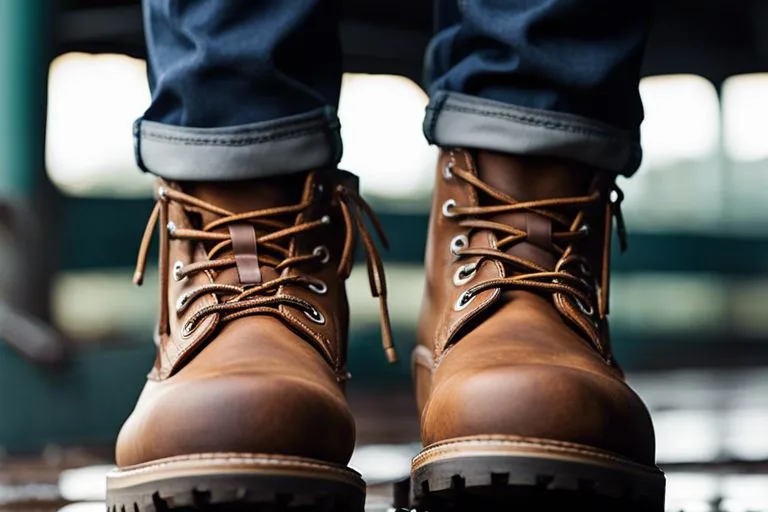You may not realize just how crucial it is to have slip-resistant work boots until you find yourself struggling to stay on your feet on a wet or slick surface. The right pair of boots can make all the difference in preventing workplace accidents and ensuring your safety. When it comes to choosing the best slip-resistant men’s work boots for any surface, there are a few key factors to consider in order to master traction and stay steady on your feet in any environment.
One of the most important aspects of slip-resistant work boots is the grip they provide on different surfaces. Whether you’re working on concrete, slick floors, or outdoor terrain, having a boot with a reliable traction pattern can mean the difference between staying upright and taking a fall. Additionally, it’s important to consider the durability and comfort of the boots, as you’ll likely be wearing them for long hours in sometimes challenging conditions. In this blog post, we’ll explore some of the best slip-resistant men’s work boots on the market, so you can find the perfect pair to keep you safe and steady on any surface.
Defining Slip Resistance
Your safety at the workplace is a top priority, and the right pair of work boots can make all the difference in preventing slips and falls. Slip resistance refers to the traction provided by the outsole of the boots, which determines how well they grip a variety of surfaces. Whether you are working on oily, wet, or uneven terrain, having slip-resistant work boots can help you stay steady on your feet and avoid potential injuries.
Key Features of Slip-Resistant Work Boots
When selecting slip-resistant work boots, there are several key features you should look for to ensure maximum traction and stability. These features include:
- High-Quality Outsole: Look for boots with outsoles made of durable, non-slip materials such as rubber or polyurethane to provide excellent grip on various surfaces.
- Deep Tread Pattern: A deep, multidirectional tread pattern helps to channel liquid away from the outsole, reducing the risk of hydroplaning on wet surfaces.
- Oil- and Slip-Resistant Compound: Boots with oil- and slip-resistant compounds in the outsole offer superior traction on oily or greasy surfaces, enhancing your stability and safety.
- Arch Support and Cushioning: Proper arch support and cushioning not only provide comfort but also improve stability and reduce the risk of slipping by ensuring a secure fit and balance.
Perceiving these key features in slip-resistant work boots will help you make an informed decision to choose the best option suited for your specific work environment and comfort needs.
Industry Standards for Traction
When it comes to slip-resistant work boots, understanding industry standards for traction is crucial. The ASTM International (formerly known as the American Society for Testing and Materials) provides standardized testing methods and ratings for slip resistance. Look for boots that meet or exceed ASTM F2413-18 standards for slip resistance, as these have undergone rigorous testing to ensure their ability to provide traction on various surfaces. Additionally, boots with electrical hazard (EH) protection meet specific safety standards for reducing the risk of electrical injuries in the workplace. By choosing work boots that adhere to industry standards for traction, you can have the confidence that they have been tested and proven to offer the necessary level of safety and stability under different conditions.
Materials and Technologies
Assuming that you are in the market for slip-resistant work boots, you need to be aware of the different materials and technologies that make a work boot suitable for any surface. The outsole and tread design are crucial aspects to consider when looking for the right pair of boots that can provide you with the traction you need to confidently navigate through various work environments.
Advanced Materials for Outsole Construction
When it comes to outsole construction, advanced materials play a significant role in providing slip resistance. Manufacturers have developed various materials that are specifically designed to enhance traction and durability, giving you a secure footing in any work setting. Some of these advanced materials include:
- Vibram Rubber: Known for its exceptional grip and durability, Vibram rubber outsoles provide excellent traction on both wet and dry surfaces. Its impressive performance in high-impact work environments makes it a popular choice among workers.
- High-Performance TPU: Thermoplastic polyurethane (TPU) is a versatile material that offers superior resistance to abrasion and chemicals. TPU outsoles are engineered to withstand the toughest conditions, ensuring stability and traction on slippery surfaces.
Innovation in Tread Design for Enhanced Grip
Another crucial aspect of slip-resistant work boots is the tread design, which directly contributes to the boots’ grip on different surfaces. Manufacturers have continuously innovated in this area to provide workers with optimal traction. Enhanced grip is achieved through innovative tread designs that maximize contact with the ground, offering stability and support in challenging work environments. These advancements in tread design often include:
- Deep Lugs and Traction Patterns: Work boots with deep lugs and intricate traction patterns are designed to effectively disperse water and debris, providing a strong grip on uneven or slippery surfaces.
- Multi-Directional Tread: Tread patterns that feature multi-directional lugs offer superior stability and traction, allowing you to confidently move in various directions without compromising your footing.
By understanding the importance of advanced materials and innovations in tread design, you can make an informed decision when selecting slip-resistant work boots that will keep you safe and secure in any work environment.

Types of Work Environments
Now, let’s take a closer look at the different types of work environments where slip-resistant men’s work boots are essential. Understanding the specific demands of your workplace will help you select the right boots to keep you safe and productive. This will enable you to navigate any surface with confidence and stability.
| Indoor Workspaces | Outdoor Work Conditions |
|---|---|
| Manufacturing facilities | Construction sites |
| Warehouses | Landscaping environments |
| Hospitals | Oil and gas fields |
| Commercial kitchens | Forestry and logging areas |
| Automotive workshops | Maritime industries |
Indoor Workspaces and Slip-Resistant Demands
When you are working in indoor environments such as manufacturing facilities, warehouses, hospitals, commercial kitchens, or automotive workshops, the demands for slip-resistant footwear are high. The presence of spilled liquids, oils, and other slippery substances can create hazardous working conditions. It is essential to have slip-resistant men’s work boots that provide the necessary grip and traction to keep you safe and stable on your feet. Your footwear should also be comfortable and supportive to help you stay on your toes throughout long shifts.
Outdoor Work Conditions and Traction Needs
When working in outdoor environments such as construction sites, landscaping environments, oil and gas fields, forestry and logging areas, or maritime industries, the terrain and weather conditions can present various challenges. Uneven surfaces, mud, gravel, and wet or slippery conditions require slip-resistant men’s work boots that offer superior traction and stability. Your footwear should also provide protection from the elements and potential hazards such as sharp objects or heavy machinery. It is crucial to have reliable footwear that can withstand the demands of outdoor work environments and keep you safe and secure on your feet.
Top Slip-Resistant Work Boots by Category
Despite the wide range of options available, finding the right slip-resistant work boots can be overwhelming. To help you find the perfect pair for your needs, we’ve compiled a list of the best options across different categories. For a comprehensive look at the top-rated slip-resistant work boots currently on the market, you can also check out 2023’s Best Slip Resistant Work Boots For Slippery Floors.
Best Overall Slip-Resistant Work Boots
When it comes to the best overall slip-resistant work boots, you want a pair that provides outstanding traction across a variety of surfaces while offering durability and comfort. Look for boots with a high-quality rubber outsole and a tread pattern designed to provide reliable grip on wet and oily surfaces. Additionally, features such as a supportive midsole and moisture-wicking lining can help keep you comfortable throughout long workdays.
Best for Heavy-Duty Environments
If you work in heavy-duty environments such as construction sites or manufacturing facilities, you need work boots that can stand up to the most demanding conditions. These boots should offer exceptional durability, reinforced toe and heel areas for added protection, and a secure fit to keep your feet stable and supported. Look for boots with a slip-resistant outsole that provides excellent traction on various surfaces and is resistant to abrasion and wear.
Best for Slippery Indoor Surfaces
For indoor environments with slippery surfaces such as kitchens or food processing facilities, it’s crucial to have work boots that can effectively prevent slips and falls. Look for an outsole with a specialized tread pattern designed to channel liquids away from the sole for improved traction. Additionally, features such as a waterproof or water-resistant upper and a supportive insole can help you stay comfortable and secure on slick indoor floors.
Best for Oil and Chemical Resistance
When working with oil, chemicals, or other hazardous substances, it’s essential to prioritize work boots with superior resistance to these materials. Look for boots with outsoles specifically engineered to provide exceptional grip on oily and wet surfaces, as well as a chemical-resistant upper to protect your feet from potential exposure. Additionally, features such as a steel or composite toe and a non-metallic shank for stability can provide added protection in these environments.
Best Budget-Friendly Options
If you’re looking for slip-resistant work boots that won’t break the bank, there are still plenty of affordable options available. While price is a consideration, it’s important not to compromise on safety and quality. Look for boots that offer a good balance of slip resistance, comfort, and durability within your budget. Keep in mind that investing in a quality pair of work boots can ultimately save you money by reducing the risk of slips, falls, and potential injuries.
By focusing on these specific categories, you can find a pair of work boots that will provide you with the traction and stability you need to stay safe and productive in your workplace. Remember to prioritize features such as a slip-resistant outsole, durable construction, and supportive comfort to ensure that you find the best fit for your specific needs.
Maintenance and Care for Maximum Traction
After investing in a high-quality pair of slip-resistant work boots, it’s important to take proper care of them to ensure they maintain their traction and durability. By following a regular maintenance routine, you can extend the lifespan of your boots and continue to benefit from their superior grip on any surface. Here are some essential maintenance tips to help you get the most out of your slip-resistant work boots.
Cleaning and Caring for Your Boots
One of the most important aspects of maintaining the traction of your work boots is keeping them clean. When dirt, mud, or other debris accumulates on the soles of your boots, it can diminish their slip resistance and compromise your safety. To prevent this, make it a habit to clean your boots regularly, especially after working in challenging environments. Use a brush or damp cloth to remove any dirt or residue from the outsoles, ensuring that the tread pattern remains clear and unobstructed. Additionally, consider using a specialized boot cleaner to thoroughly remove any stubborn stains or buildup that may have accumulated over time. By keeping your boots clean, you can maximize their slip-resistant properties and maintain optimal traction on various surfaces.
When to Replace Your Work Boots
No matter how well you maintain your work boots, there will come a time when they need to be replaced. Over time, the tread on the outsoles will wear down, and the slip-resistant properties of the boots will diminish. It’s important to regularly inspect your boots for signs of wear and tear, such as noticeable tread wear, cracks in the outsole, or loss of grip on slick surfaces. If you notice any of these issues, it’s time to consider replacing your boots to maintain the highest level of traction and safety. Additionally, if the insoles or midsoles of your boots become worn or compressed, they can affect the overall support and stability of the footwear, further compromising their slip-resistant capabilities. By being proactive in replacing your work boots when necessary, you can ensure that you always have reliable traction in any work environment.
Tips for Enhancing Traction
Lastly, to further enhance the traction of your work boots, there are a few tips and tricks that you can implement. First, consider investing in aftermarket Men’s Slip Resistant Work Boots & Shoes from HYTEST that are specifically designed to provide superior grip on various surfaces. These high-quality work boots are engineered to keep you stable and secure, no matter the conditions. Additionally, you can also look into using ice cleats or traction spikes for added stability on slick surfaces. These accessories can easily be attached to your existing work boots, providing an extra layer of slip resistance when you need it most. Remember, investing in the right footwear and accessories is essential to ensure your safety and stability in the workplace.
Lastly, consider adopting best practices for walking on slippery surfaces. Distribute your weight evenly, take slow and deliberate steps, and avoid sudden movements that could cause you to lose your balance. Always use handrails where available and be mindful of your surroundings. Thou, with the right approach and equipment, you can significantly reduce the risk of slips and falls at work.
Aftermarket Accessories for Improved Grip
When it comes to enhancing the traction of your men’s work boots, aftermarket accessories can be a game-changer. Adding ice cleats or traction spikes to your footwear can provide you with the extra grip you need on icy or slick surfaces. These accessories are designed to be easy to attach and remove, allowing you to adapt to changing conditions quickly. Additionally, investing in high-quality aftermarket insoles with enhanced grip and stability can also make a significant difference in your overall traction. These accessories are specifically designed to provide additional support and slip resistance. By incorporating these add-ons into your work boot ensemble, you can ensure that you are prepared for any challenging surface you may encounter on the job.
Best Practices for Preventing Slips and Falls at Work
When it comes to preventing slips and falls at work, there are several best practices you should keep in mind. Firstly, always stay aware of your surroundings and pay attention to potential hazards such as wet or uneven surfaces. It’s also important to maintain proper posture and balance while walking to ensure stability and avoid falls. Additionally, wearing proper footwear with superior traction is crucial to minimize the risk of slipping. Incorporating these best practices into your daily routine can significantly reduce the likelihood of workplace accidents and injuries. Remember, your safety is paramount, and taking proactive measures can make all the difference in preventing slips and falls on the job.

Mastering Traction – The Best Slip-Resistant Men’s Work Boots for Any Surface
Drawing together the information in this guide, you now have a comprehensive understanding of the best slip-resistant men’s work boots available for any surface. With our expert recommendations, you can confidently select a pair of boots that will provide you with the traction and stability you need to stay safe and productive in any work environment. Remember, the right pair of work boots can make all the difference when it comes to preventing slips, trips, and falls, so invest in a quality pair that meets your specific needs and preferences.
Whether you work in construction, landscaping, or another industry that requires durable and reliable work boots, ensuring that you have proper traction is essential. By choosing one of the recommended options in this guide, you can feel confident knowing that you are investing in a high-quality, slip-resistant work boot that will keep you safe and comfortable throughout your workday. So, go ahead and find the perfect pair of work boots to conquer any surface with confidence and stability.
FAQ
Q: What makes slip-resistant work boots different from regular work boots?
A: Slip-resistant work boots have specialized outsoles that provide extra traction on slippery surfaces, reducing the risk of slips and falls. They often have a unique tread pattern and are made from materials designed to grip different surfaces.
Q: Are slip-resistant work boots suitable for all types of surfaces?
A: While slip-resistant work boots are designed to provide traction on a variety of surfaces, it’s important to choose the right type of boot for the specific surfaces you’ll be working on. Some boots may be better suited for oily surfaces, while others are designed for wet or uneven terrain.
Q: How do I know if a pair of work boots is truly slip-resistant?
A: Look for work boots that have been tested and certified for slip resistance by recognized industry standards organizations. Additionally, check the tread pattern and material composition of the outsole to ensure it is designed for maximum traction.
Q: Can slip-resistant work boots provide other safety features besides slip-resistance?
A: Many slip-resistant work boots also come with additional safety features such as steel toe caps, electrical hazard protection, and puncture-resistant soles. These features provide added protection in hazardous work environments.
Q: How often should I replace my slip-resistant work boots?
A: The lifespan of slip-resistant work boots can vary depending on the frequency of use and the working conditions they are exposed to. It’s important to regularly inspect your boots for signs of wear and tear, and replace them when the outsole tread becomes worn down or their slip-resistant properties diminish.

